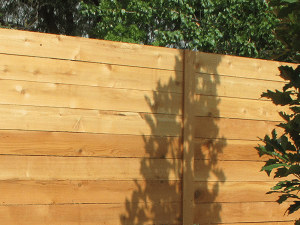Maintaining your fence is an important aspect of homeownership. A well-maintained fence not only enhances the aesthetics of your property but also provides security and privacy. However, fences are subject to wear and tear over time, and it is essential to address any issues promptly to prevent further damage. Learning fence repair can save you money, as you won’t have to hire a professional for every small repair. Additionally, completing a home improvement project like fence repair can be incredibly satisfying and give you a sense of accomplishment.
Contents
- 1 Common Fence Issues and Their Causes
- 2 Tools and Materials Needed for Fence Repair
- 3 Safety Precautions to Take Before Starting Fence Repair
- 4 How to Repair a Leaning Fence
- 5 How to Fix a Broken Fence Post
- 6 How to Replace a Damaged Fence Panel
- 7 How to Repair a Sagging Gate
- 8 When to Call a Professional Fence Company
- 9 Maintaining Your Fence for Longevity and Aesthetics
Key Takeaways
- Learning fence repair can save you money and increase the lifespan of your fence.
- Common fence issues include leaning, broken posts, damaged panels, and sagging gates.
- Tools and materials needed for fence repair include a level, post hole digger, concrete mix, and replacement panels.
- Safety precautions before starting fence repair include wearing protective gear and checking for underground utilities.
- Repairing a leaning fence involves digging a new post hole and securing the post with concrete.
Common Fence Issues and Their Causes
There are several common issues that can arise with fences, and understanding their causes can help you prevent them in the future. One of the most common causes of fence damage is weather. Exposure to harsh elements such as rain, snow, and wind can cause the wood to rot or warp, leading to weakened fence panels or posts. Age and wear are also significant factors in fence deterioration. Over time, the materials used in the construction of the fence may degrade, making it more susceptible to damage.
Improper installation can also lead to fence problems. If the posts were not set deep enough or if they were not properly secured with concrete, the fence may become unstable or start leaning. Lastly, animal damage is another common issue that homeowners face. Animals such as squirrels, rabbits, or even larger animals like deer can cause damage to fences by chewing on the wood or digging under it.
Tools and Materials Needed for Fence Repair
Before you begin any fence repair project, it is essential to gather the necessary tools and materials. Some of the basic tools you will need include a hammer for removing nails or securing new ones, a level for ensuring that your repairs are straight and even, and a post hole digger for digging new holes if needed. Additionally, you will need nails or screws for attaching new panels or securing loose ones.
If you are replacing a post, you will need concrete mix to secure it in the ground. It is also a good idea to have replacement panels or posts on hand in case you need them. By having all the necessary tools and materials ready, you can save time and complete your fence repair project efficiently.
Safety Precautions to Take Before Starting Fence Repair
Before you start any fence repair project, it is crucial to prioritize safety. First and foremost, make sure to wear protective gear such as gloves and safety glasses to protect yourself from any potential injuries. Additionally, it is essential to check for underground utilities before digging any new post holes. Contact your local utility company to mark the location of any underground lines to avoid accidents.
When handling tools and materials, use caution and follow the manufacturer’s instructions. Be mindful of sharp edges and heavy objects, and always use tools as intended. Taking these safety precautions will help ensure that your fence repair project goes smoothly and without any accidents.
How to Repair a Leaning Fence
A leaning fence is a common issue that can be caused by various factors such as weather damage or improper installation. To repair a leaning fence, start by identifying the cause of the lean. If it is due to a loose or damaged post, you can straighten the fence with a brace. A brace is a temporary support that can be attached to the fence and anchored into the ground.
To straighten the fence with a brace, position it diagonally against the leaning post and secure it with screws or nails. Then, use a level to ensure that the fence is straight before tightening the brace. Leave the brace in place for at least 24 hours to allow the post to regain its stability. If the lean persists after using a brace, you may need to reinforce the fence with additional support such as installing a new post next to the leaning one.
How to Fix a Broken Fence Post
A broken fence post can compromise the stability of your fence and should be repaired promptly. To fix a broken fence post, start by removing the damaged post. This can be done by cutting through any nails or screws that are holding it in place. Once the post is removed, dig a new post hole using a post hole digger. The hole should be deep enough to accommodate at least one-third of the new post’s length.
Next, insert the new post into the hole and use a level to ensure that it is straight. Mix concrete according to the manufacturer’s instructions and pour it into the hole around the post. Use a trowel to smooth the surface of the concrete and allow it to dry completely before attaching any panels to the new post.
How to Replace a Damaged Fence Panel
If you have a damaged fence panel, it is relatively easy to replace it with a new one. Start by removing the damaged panel. This can be done by removing any nails or screws that are holding it in place. Once the panel is removed, measure and cut a replacement panel to fit the opening. Make sure to leave a small gap between the bottom of the panel and the ground to prevent moisture damage.
Once you have cut the replacement panel, attach it to the fence using nails or screws. Make sure that it is level and secure before moving on to the next panel. Repeat this process for any additional damaged panels until your fence is fully repaired.
How to Repair a Sagging Gate
A sagging gate can be both unsightly and inconvenient. To repair a sagging gate, start by tightening the hinges. Use a screwdriver or wrench to tighten any loose screws or bolts that are holding the hinges in place. This may help alleviate some of the sagging.
If tightening the hinges does not solve the problem, you may need to reinforce the gate with additional support. This can be done by installing a diagonal brace across the gate. The brace should be positioned from the top corner of the gate to the bottom corner on the opposite side. Secure the brace with screws or nails, making sure that it is straight and level.
If the hinges are severely damaged or worn out, it may be necessary to replace them. Remove the old hinges and install new ones according to the manufacturer’s instructions. This will ensure that your gate is secure and functions properly.
When to Call a Professional Fence Company
While learning fence repair can be a valuable skill for homeowners, there are instances when it is best to call a professional fence company like Logan Utah Fence Company. If your fence has extensive damage or requires major repairs, it may be more cost-effective and efficient to hire professionals who have the experience and tools necessary to handle the job.
Additionally, if you lack the experience or confidence to tackle a fence repair project on your own, it is best to leave it to the professionals. They can ensure that the repairs are done correctly and safely. Lastly, if you have time constraints or simply prefer to have someone else handle the repairs, hiring a professional fence company can save you time and effort.
Maintaining Your Fence for Longevity and Aesthetics
Maintaining your fence is essential for its longevity and aesthetics. Regular maintenance can prevent costly repairs down the line by addressing small issues before they become significant problems. By learning fence repair, you can save money by tackling minor repairs on your own. Additionally, completing a home improvement project like fence repair can give you a sense of accomplishment and satisfaction.
A well-maintained fence adds value to your property by enhancing its curb appeal and providing security and privacy. By taking the time to learn fence repair, you can ensure that your fence remains in good condition for years to come. Whether it’s fixing a leaning fence, replacing a broken post, or repairing a damaged panel, having the knowledge and skills to address these issues will benefit you as a homeowner. So, roll up your sleeves and start learning fence repair today!
If you’re looking to fix common fence issues yourself, you may also find Logan Fence Company’s FAQ page helpful. They provide answers to frequently asked questions about fence repair, maintenance, and installation. Check it out here for more information.




